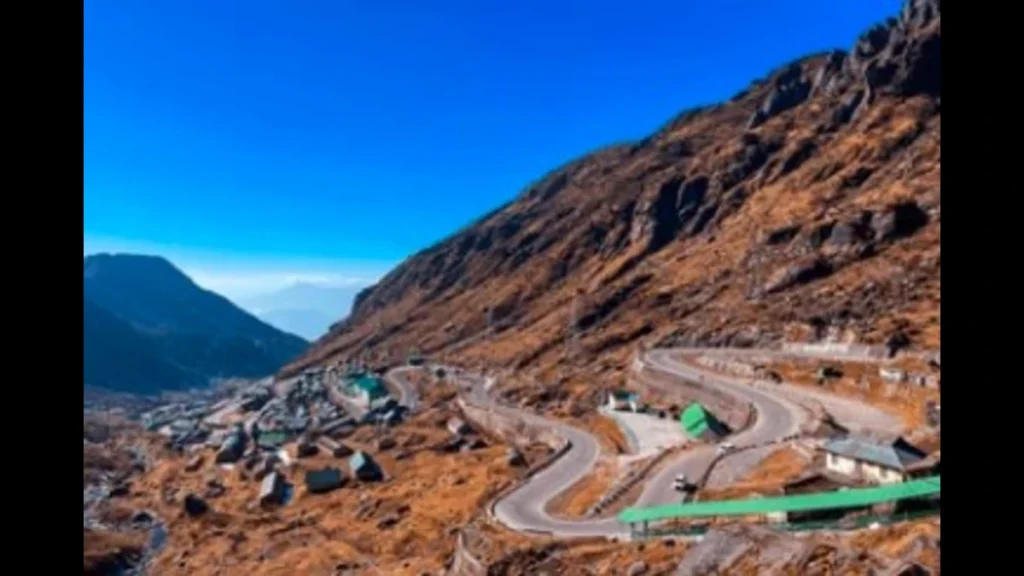East Sikkim District: SIKKIM
“Explore the captivating beauty and cultural heritage of East Sikkim District, nestled in the Himalayas. Discover pristine landscapes, vibrant traditions, and thrilling adventures in this enchanting corner of India.”

Nestled in the northeastern part of India, East Sikkim District is a captivating blend of breathtaking natural landscapes and rich cultural heritage. With an area of approximately 954 square kilometers, this district is one of the four administrative divisions of the Indian state of Sikkim. It is a land where snow-capped peaks, lush green valleys, and vibrant traditions coexist harmoniously.
Geographically, East Sikkim is dominated by the mighty Himalayan range, which runs along its western border. The Kangchenjunga, the third-highest peak in the world, proudly towers over this region, offering a mesmerizing view that attracts trekkers and mountaineers from around the globe. The district’s eastern border shares its boundary with the neighboring state of West Bengal.
One of the standout features of East Sikkim is its pristine forests, which cover a significant portion of the district. These lush woodlands are home to a wide array of flora and fauna, including several endangered species. The Maenam Wildlife Sanctuary, located in the southern part of the district, is a testament to the region’s rich biodiversity. Visitors can embark on treks and nature trails to witness the natural wonders of this district up close.
The district’s capital and administrative center, Gangtok, is a bustling town that beautifully balances modernity and tradition. It serves as a gateway for tourists exploring the treasures of East Sikkim. The town is adorned with colorful monasteries, vibrant markets, and charming streets lined with prayer flags. The Enchey Monastery, Rumtek Monastery, and Tsomgo Lake are some of the must-visit attractions in and around Gangtok.
East Sikkim is also renowned for its numerous hot springs, which are believed to have therapeutic properties. The Yumthang Valley, known as the “Valley of Flowers,” is home to a multitude of colorful blooms during the spring season. The hot spring at Yumthang is a natural wonder, and many visitors come here to soak in its healing waters.
Culturally, East Sikkim is a treasure trove of traditions and rituals. The district is inhabited by a diverse mix of communities, including the Bhutias, Lepchas, and Nepalis, each contributing to the rich cultural tapestry of the region. Festivals like Losar, Dashain, and Tihar are celebrated with great fervor, showcasing the vibrant spirit of the people.
The cuisine of East Sikkim is another aspect that tantalizes the taste buds of visitors. Momos (steamed dumplings), thukpa (noodle soup), and sel roti (rice-based doughnuts) are some of the delectable dishes that reflect the district’s culinary diversity.
For adventure enthusiasts, East Sikkim offers a range of activities such as trekking, paragliding, and river rafting. The region’s topography provides an ideal setting for these thrilling experiences.
In conclusion, East Sikkim District is a land of unmatched beauty and cultural richness. It beckons travelers to explore its diverse landscapes, from towering Himalayan peaks to tranquil valleys and dense forests. This district is not just a destination; it’s an experience that leaves an indelible mark on the hearts of those fortunate enough to visit. Whether you seek adventure, spirituality, or a tranquil escape from the chaos of city life, East Sikkim has something to offer every traveler, making it a true gem in the crown of India’s northeastern states.
Famous Places in East Sikkim District
East Sikkim District is a treasure trove of famous places that offer a unique blend of natural beauty, spirituality, and cultural significance. Here are some of the most renowned destinations to explore in this enchanting district:
Gangtok: The capital of Sikkim, Gangtok, is a bustling town surrounded by mountains and adorned with monasteries. Don’t miss the breathtaking views from the Ganesh Tok and the peaceful ambiance of Enchey Monastery.
Rumtek Monastery: Often referred to as the “Dharmachakra Centre,” Rumtek Monastery is one of the most important and largest monasteries in Sikkim. It’s a center for Tibetan Buddhist study and a visual masterpiece with intricate architecture.
Tsomgo Lake: Also known as Changu Lake, this high-altitude glacial lake is a stunning sight, especially when it’s frozen during the winter. It’s surrounded by snow-capped mountains and offers yak rides for a memorable experience.
Nathula Pass: Located on the Indo-China border, Nathula Pass is a historic mountain pass and a part of the ancient Silk Route. It’s known for its breathtaking views and is accessible to tourists during certain times of the year.
Baba Harbhajan Singh Temple: This unique shrine is dedicated to an Indian army soldier who is believed to protect the border even after his death. It’s an essential stop for those interested in the folklore of the region.
Ganesh Tok: This temple dedicated to Lord Ganesh offers panoramic views of Gangtok and the surrounding mountains. It’s a serene place to soak in the natural beauty of the region.
Tsongmo Wildlife Sanctuary: This sanctuary is home to a diverse range of wildlife, including the red panda and various species of birds. It’s an excellent spot for nature enthusiasts and trekkers.
Hanuman Tok: Another beautiful temple, Hanuman Tok, is dedicated to Lord Hanuman. It provides stunning views of the Himalayas and is a serene place for meditation.
Kupup Lake: Also known as Elephant Lake, Kupup Lake is a high-altitude glacial lake surrounded by rugged terrain. It’s a picturesque destination for nature lovers.
Namgyal Institute of Tibetology: Located in Gangtok, this institute is a hub of Tibetan culture and research. It houses a vast collection of Tibetan artifacts, manuscripts, and artworks.
These famous places in East Sikkim District offer a glimpse into the diverse and rich culture, spirituality, and natural beauty that make this region a must-visit destination for travelers seeking a unique and immersive experience in the Himalayas.
Read More :-
